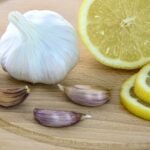
Wonderful 10 Foods to Lower Blood Pressure
Hypertension or high blood pressure is called the “invisible killer” because there are usually no symptoms in the initial stage of hypertension, and patients often find the disease after complications occur. There are many causes of high blood pressure. In addition to uncontrollable causes, such as aging and family history, our daily eating habits are also closely related. Appropriate exercise and diet can help control blood pressure and avoid the risk of diseases caused by high blood pressure.
Persistent high blood pressure can easily increase the risk of stroke, coronary heart disease, heart failure, etc. Patients should pay special attention to diet. Avoid eating certain foods that will cause blood pressure to continue to rise. At the same time, you can also eat more foods that help lower blood pressure, and pay attention to certain foods. Food may interact with blood pressure lowering drugs and affect the efficacy of the drugs. The following are the foods recommended by the American health website Healthline for patients with high blood pressure.
Remember To Take The Following Food To Lower Blood Pressure
- GREEN LEAF VEGETABLES
Green leaf vegetables are rich in potassium. Potassium helps the kidneys excrete sodium from the body through urine, helping hypertension patients lower blood pressure. Green leafy vegetables include lettuce, arugula, kale, spinach, etc. However, dark green vegetables are rich in vitamin K, which will fight against the blood-thinning drug warfarin. If you eat a lot, the efficacy of the drug will be halved, and blood clotting will increase the risk of stroke. - BEETROOT
The high content of nitric oxide in beetroot can help clear blood vessels and lower blood pressure. Researchers found that the nitrates in beetroot can lower the blood pressure of study participants in just a few hours. - CITRUS FRUITS
Citrus fruits are rich in vitamins, minerals and plant compounds, especially flavonoids, which can help stabilize blood pressure and have a powerful blood pressure lowering effect, thereby reducing the risk of heart disease. However, eating citrus fruits and some antihypertensive drugs will reduce the efficacy of the drugs by half and even cause side effects such as dizziness. - TOMATOES
Tomatoes are rich in lycopene. Lycopene is a lipophilic, unsaturated carotenoid, which may promote the excretion of sodium in the body, help maintain the body’s water and acid-base balance, and soften the blood vessels to lower blood pressure. Function to prevent cardiovascular disease. Cooking tomatoes with a little oil can destroy the cell walls of tomatoes and release more lycopene. - FISH RICH IN OMEGA 3 FATTY ACIDS
Omega 3 fatty acids can reduce inflammation and vasoconstriction, which helps lower blood pressure levels. A study found that people with the highest levels of omega 3 fatty acids in their blood have significantly lower blood pressure. Fish rich in omega 3 are mackerel, salmon and sardine. - PISTACHIO
A study showed that pistachios have lower fat and calories, and are rich in unsaturated fatty acids, potassium, and xanthophyll carotenoids. One serving (approximately 15) of pistachios per day can help lower blood pressure. - PUMPKIN SEEDS
Pumpkin seeds contain healthy fatty acids and linolenic acid, an anti-inflammatory agent for the body, and plant cholesterol that can lower cholesterol. Among them, magnesium and potassium can produce amino acids required for nitric oxide, and have significant effects on blood vessel relaxation and lowering blood pressure. - DARK CHOCOLATE
The higher the cocoa content of dark chocolate, the higher the retinol content. A study found that consuming about 100 grams of dark chocolate a day may reduce the risk of cardiovascular disease. - SKIM MILK OR YOGURT
Skimmed milk is rich in calcium and low in fat, which is an important nutrient for lowering blood pressure. A study published in the American Journal of Clinical Nutrition shows that adding two to three servings (approximately 500 to 750 ml) of skimmed dairy products to the daily diet can lower blood pressure in middle-aged and elderly people. Those with lactose intolerance can also choose yogurt. According to the American Heart Association, women who eat five servings (about 1 liter) or more of yogurt per week have a 20% lower risk of developing high blood pressure. But pay attention to the sugar content of yogurt, sugar-free is better. - SUGAR-FREE SOY MILK
Sugar-free soy milk is low-fat and contains no cholesterol. It is a good source of plant-based protein. The lecithin contained in soybeans has a strong emulsifying effect, which can dissolve bad cholesterol and excrete it from the body, so that fat and cholesterol will not accumulate in the blood vessel wall, thereby preventing high blood pressure.
INSTEAD OF TAKING ALL THE ABOVE FOOD, YOU MAY CONSIDER TO BUY THE FOLLOWING PRODUCTS

















